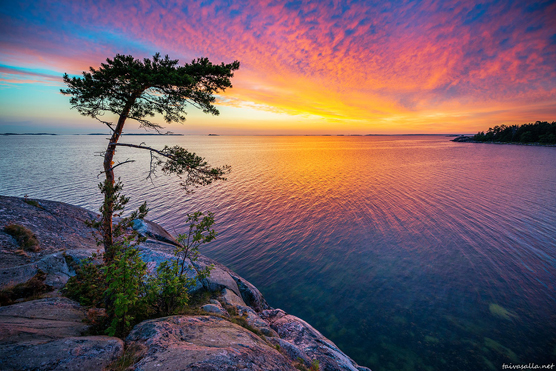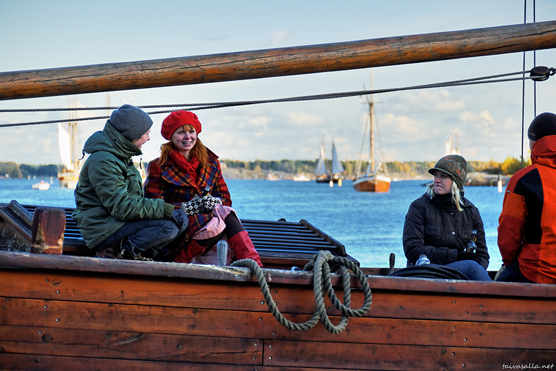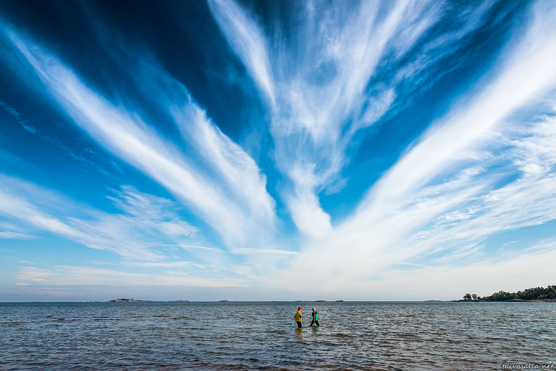About the project:
Good environmental status (GES) and Blue Growth (BG) are the two main goals in today’s policy frameworks and trade-offs between them need to be considered when implementing ecosystem-based management (EBM) approaches. BONUS BLUEWEBS is designed to deliver an assessment of the consequences of simultaneously achieving the good environmental status and providing blue growth (i.e. the capability of Baltic Sea food webs to sustainably produce ecosystem goods and services). Achieving optimal/sustainable trade-offs between these goals is challenged by the multifaceted nature of external impacts on Baltic Sea ecosystems.

© Niklas Sjöblom /taivasalla.net
Global climate change will likely result in novel climates, leading to combinations of physical oceanographic conditions never encountered before. These will affect ecosystems in addition to the regional anthropogenic impacts of eutrophication, fisheries exploitation, invasion of non-indigenous species and accumulation of hazardous substances. These cumulative impacts have already (and will likely continue in the future) cause novel food webs that significantly differ in structure and function from historical predecessors. Novel food webs in concert with novel climates will likely render present management tools and measures unsuitable and hence challenge the ability of society to achieve GES while safeguarding BG potential.

© Niklas Sjöblom /taivasalla.net
BLUEWEBS will address knowledge gaps concerning the functioning of novel Baltic Sea food webs with respect to:
- temporal and spatial variability in ”bottom-up” and ”top-down” forces;
- mechanisms of past changes in food web structure and function, as well as trophic cascades and regime shifts;
- transformation of nutrients and harmful substances;
- impacts of nutrient and contaminant loading, climate forcing, introduction of non-indigenous species and fisheries on food web dynamics;
- socio-ecological coupling and ecosystem service provisioning potential.

© Niklas Sjöblom /taivasalla.net
To accomplish these goals, BLUEWEBS will answer the following questions:
- What is the novelty in today’s Baltic Sea food webs in terms of structure and function?
- What are the likely futures of Baltic Sea ecosystems accounting for food web novelty and novel climates in integrated model systems?
- What is the capability of novel Baltic food webs to provide the range of potential ecosystems services human societies demand?
- How do present management tools and measures need to be modified in order to reliably achieve the optimal trade-off between achieving GES while assuring BG sustainably?
- What are best practices to include non-academic knowledge into scientific and decision making processes?
Partners
Finnish Environment Institute
Hamburg University
Kiel University
Stockholm University
Åbo Akademi University
Institute of Food Safety, Animal Health and Environment
National Marine Fisheries Research Institute